Usuario "raulito"
Se han encontrado 162 Coincidencias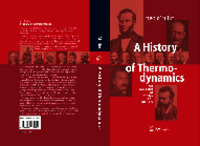
A History of Thermodynamics. The Doctrine of Energy and Entropy
67 Visitas | 83 Descargas | 2014-04-09 17:18:40 | raulito
The most exciting and significant episode of scientific progress is the development of thermodynamics and electrodynamics in the 19th century and early 20th century. The nature of heat and temperature was recognized, the conservation of energy was discovered, and the realization that mass and energy are equivalent provided a new fuel, – and unlimited power. Much of this occurred in unison with the rapid technological advance provided by the steam engine, the electric motor, internal combustion engines, refrigeration and the rectification processes of the chemical industry. The availability of cheap power and cheap fuel has had its impact on society: Populations grew, the standard of living increased, the environment became clean, traffic became easy, and life expectancy was raised. Knowledge fairly exploded. The western countries, where all this happened, gained in power and influence, and western culture – scientific culture – spread across the globe, and is still spreading.
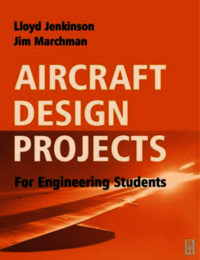
Aircraft Design Projects
75 Visitas | 94 Descargas | 2014-04-10 16:15:38 | raulito
There are many excellent texts covering aircraft design from a variety of perspectives. Some of these are aimed at specific audiences ranging from practising aerospace engineers, to engineering students, to amateur airplane builders. Others cover specialized aspects of the subject such as undercarriage or propulsion system design. Some of these are quite detailed in their presentation of the design process while others are very general in scope. Some are overviews of all the basic aeronautical engineering subjects that come together in the creation of a design.

Missile Guidance and Control Systems
84 Visitas | 132 Descargas | 2014-04-10 16:19:51 | raulito
The intent of this book is to present the fundamental concepts of guided missiles, both tactical, and strategic and the guidance, control, and instrumentation needed to acquire a target. In essence, this book is about the mathematics of guided flight. This book differs from similar books on the subject in that it presents a detailed account of missile aerodynamic forces and moments, the missile mathematical model, weapon delivery, GPS (global positioning system) and TERCOM(terrain contour matching) guidance, cruise missile mechanization equations, and a detailed analysis of ballistic guidance laws. Moreover, an attempt has been made to give each subject proper emphasis, while at the same time special effort has been put forth to obtain simplicity, both from the logical and pedagogical standpoint. Typical examples are provided, where necessary, to illustrate the principles involved. Numerous figures give the maximum value of visual aids by showing important relations at a glance and motivating the various topics. Finally, this book will be viii Preface of benefit to engineers engaged in the design and development of guided missiles and to aeronautical engineering students, as well as serving as a convenient reference for researchers in weapon system design.
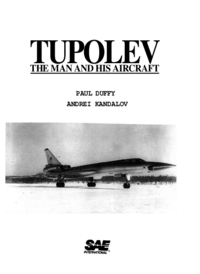
TUPOLEV. The man and his aircraft
99 Visitas | 132 Descargas | 2014-04-10 16:26:13 | raulito
A book about the history of Tupolev Joint Stock Company in the name of academician A. N. Tupolev, well-known in the countries of former Soviet Union and its allies. Its history is not so well-known in the West. This book is one of the first publications in the West about Design Bureau and aviation industry, especially all-metal aircraft, one of the most influential founders of which was Andrei Nikolaevich Tupolev.
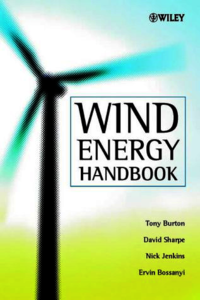
WIND ENERGY HANDBOOK
57 Visitas | 83 Descargas | 2014-04-10 16:36:15 | raulito
The use of wind energy to generate electricity is now well accepted with a large industry manufacturing and installing thousands of MWs of new capacity each year. Although there are exciting new developments, particularly in very large wind turbines, and many challenges remain, there is a considerable body of established knowledge concerning the science and technology of wind turbines. This book is intended to record some of this knowledge and to present it in a form suitable for use by students (at final year undergraduate or post-graduate level) and by those involved in the design, manufacture or operation of wind turbines. The overwhelming majority of wind turbines presently in use are horizontal-axis, land- SCOPE OF THE BOOK 7 based turbines connected to a large electricity network. These turbines are the subject of this book.

Handbook of Air Pollution from Internal Combustion Engines. Pollutant Formation and Control
56 Visitas | 57 Descargas | 2014-04-10 16:47:08 | raulito
Motor vehicles-cars, trucks, and buses-are a major source of air pollution. For 35 years we have been both learning about the problem and attempting to control vehicle emissions. In this introduction, we trace the history of our efforts to understand this important environmental issue and to find effective solutions, as well as look ahead to the future. While steady progress has been made and effective technology, such as engine controls, exhaust catalysts, and improved fuels, has been developed at the individual vehicle level, the full resolution of this problem still escapes us. Growth in vehicle use and the failure of the emission controls in a small but significant fraction of vehicles have offset a substantial part of the anticipated gains. Looking to the future, are prospects for effective emissions control better? Yes, improved fuel injection, sensors and controls, and catalyst technologies are being developed, more effective inspection programs are being implemented, and alternative fuels may play some role. However, growth in vehicle use will continue to present a major environmental challenge to both automotive engineers and regulators.
Problemas de termotecnia
63 Visitas | 120 Descargas | 2014-04-10 16:58:53 | raulito
El presente compendio de problemas de termotecnia se destina a profundizar el estudio del curso "Termotecnia" para alumnos de especialidades no energéticas de los centros de enseñanza superior.
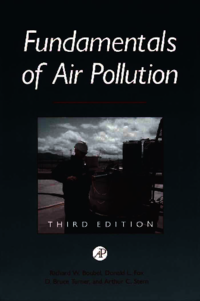
Fundamentals of Air Pollution
74 Visitas | 73 Descargas | 2014-04-10 17:06:38 | raulito
In the environmental protection and management field, the experience of the recent past has been that physicists and electrical engineers have been most attracted to the radiation, nuclear, and noise areas; biologists and civil approximates the ratio of those professionally involved in the field of air pollution. In the environmental protection and management field, the experience of the recent past has been that physicists and electrical engineers have been most attracted to the radiation, nuclear, and noise areas; biologists and civil engineers to the aquatic and solid waste areas; chemists, meteorologists, and chemical and mechanical engineers to the area of air pollution and its control. These remarks are not intended to exclude all others from the party (or from this course). The control of air pollution requires the combined efforts of all the professions mentioned, in addition to the input of physicians, lawyers, and social scientists. However, the professional mix of the authors, and their expectation of a not-too-dissimilar mix of students

Macmillan Encyclopedia of Energy. Volume 1
48 Visitas | 79 Descargas | 2014-04-10 17:15:02 | raulito
The Encyclopedia covers the major energy-using technologies and examines the advances that have been made in terms of performance and efficiency. This is an important approach because the unforeseen technology of tomorrow might be far different from what exists today, leading to an alteration in patterns of energy consumption. Only by improving how experts predict how technological innovation will alter energy consumption will we be able to avoid making erroneous energy predictions similar to those made in the 1970s. A large number of entries related to transportation are included because this sector of the economy faces the greatest challenges in the future with regard to energy use. The reliance on imported petroleum and the difficulty in switching to another energy source make the transportation sector particularly vulnerable to supply disruptions and wild price fluctuations. Subjects related to electricity are also well represented because of the rapid pace of growth in the field of electric technology.

Macmillan Encyclopedia of Energy. Volume 2
64 Visitas | 89 Descargas | 2014-04-10 17:17:31 | raulito
The Encyclopedia covers the major energy-using technologies and examines the advances that have been made in terms of performance and efficiency. This is an important approach because the unforeseen technology of tomorrow might be far different from what exists today, leading to an alteration in patterns of energy consumption. Only by improving how experts predict how technological innovation will alter energy consumption will we be able to avoid making erroneous energy predictions similar to those made in the 1970s. A large number of entries related to transportation are included because this sector of the economy faces the greatest challenges in the future with regard to energy use. The reliance on imported petroleum and the difficulty in switching to another energy source make the transportation sector particularly vulnerable to supply disruptions and wild price fluctuations. Subjects related to electricity are also well represented because of the rapid pace of growth in the field of electric technology.

Macmillan Encyclopedia of Energy. Volume 3
59 Visitas | 97 Descargas | 2014-04-10 17:19:56 | raulito
The Encyclopedia covers the major energy-using technologies and examines the advances that have been made in terms of performance and efficiency. This is an important approach because the unforeseen technology of tomorrow might be far different from what exists today, leading to an alteration in patterns of energy consumption. Only by improving how experts predict how technological innovation will alter energy consumption will we be able to avoid making erroneous energy predictions similar to those made in the 1970s. A large number of entries related to transportation are included because this sector of the economy faces the greatest challenges in the future with regard to energy use. The reliance on imported petroleum and the difficulty in switching to another energy source make the transportation sector particularly vulnerable to supply disruptions and wild price fluctuations. Subjects related to electricity are also well represented because of the rapid pace of growth in the field of electric technology.

OPERACIONES DE TRANSFERENCIA DE MASA
103 Visitas | 366 Descargas | 2014-04-10 17:28:01 | raulito
Al presentar la tercera edición de este libro, mi propósito es el mismo que en la edición anterior: “proporcionar un instrumento para enseñar mediante un curso formal o autodidactico, las técticas y principios del diseño de equipo para las operaciones de transferencia de masa en Ingenieria química”. Al igual que ayer, estas operaciones son, en principio, responsabilidad del ingeniero químico pero en la actualidad resultan necesarias dentro de otras ramas de la Ingeniería. Por ejemplo, se necesitan, especialmente, en el control de la contaminación ambiental y en la protección del ambiente, donde predominan los procesos de eparación se requieren también en la metalurgia extractiva, que las utiliza con mayor frecuencia en métodos más complejos y precisos. Aproveché esta oportunidad para mejorar muchas explicaciones, actualizar los datos del diseño y para dar mayor fluidez a la reacción del texto. En esta edición se analizan temas como la teoría de la elongación de la interfase para la transferencia de masa, el enfriamiento por transpiración, nuevos tipos de torres de platos, adsorbedores sin generación de calor y otros temas similares. Se presentan métodos completos de diseño de mezcladores con sedimentadores y equipos de extracción de platos perforados; tanques de burbujeo y tanques con agitación mecánica para contacto gas-liquido, liquido-líquido y sólido-liquido; torres absorbedoras empacadas de tipo adiabático y enfriadores por evaporación. Se presentan nuevos ejemplos y problemas resueltos para que el estudiante adquiera práctica. Con objeto de mantener la extensión de este libro dentro de limites razonables, se omitió el estudio breve de las llamadas operaciones menos convencionales, que aparecía en el último capitúlo de la edición anterior.

Ingeniería de la cinética química
81 Visitas | 115 Descargas | 2014-04-10 17:37:17 | raulito
En la década transcurrida desde la publicación de la segunda edición, los progresos logrados en el disefio de reactores han vuelto a hacer necesaria una revisión bastante completa de todos los capítulos. Esta revisión proporcionó una oportunidad para mejorar la presentación de los conceptos básicos. Los cambios más importantes de este tipo se encuentran en los Caps. 3-5. Las ecuaciones de conservación de la masa del Cap. 3 se han desar;ollado de una manera más general. Esta presentación permite que las expresiones de diseño para formas específicas de reactores, tal como aparecen en el resto del libro, se puedan obtener directamente por simplificación de las ecuaciones generales. El análisis de los reactores con recirculación, que no se incluyó en la segunda edición, se introduce en el Cap. 4. Los temas de reactores semicontinuos (Cap. 4) se han modificado de tal manera que, junto con los reactores con recirculación, proporcionen ilustraciones adicionales de las ecuaciones generales de conservación de la masa obtenidas en el Cap. 3. Para lograr una presentación m8s clara, los balances de masa y de energía se estudian como temas completamente separados. De esta manera, la ecuación general de conservación de la energía se desarrolla en el Cap. 5, donde se usa para el diseño de reactores no isotérmicas.
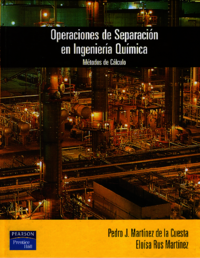
Operaciones de Separación en Ingeniería Química (Métodos de Cálculo)
104 Visitas | 354 Descargas | 2014-04-10 18:00:18 | raulito
El desarrollo de la profesión de Ingeniero Químico tiene, entre otras actividades, las de concebir, calcular, proyectar, hacer construir y hacer funcionar las instalaciones donde, de manera eficaz, se lleven a cabo reacciones químicas u operaciones de separación. La necesidad que el alumno de Operaciones de Separación tiene de disponer de libros en esta materia que le faciliten el conocimiento de la misma, nos llevó a la preparación de la obra Operaciones de Separación en Ingeniería Química. Métodos de Cálculo, que aborda de forma detallada y práctica las operaciones más importantes de la Ingeniería Química, tanto en contacto continuo propiamente dicho, como en cascada de etapas de equilibrio. La construcción de cada capítulo se encuentra fundamentada sobre bases físicas, químicas, matemáticas y económicas, bajo cuyos enfoques habrá que resolver los distintos problemas que se puedan presentar. En la redacción se utiliza un lenguaje conciso, de fácil comprensión, que permite una rápida transmisión de conocimientos y al mismo tiempo, puede conseguir la motivación del lector para formularse nuevas preguntas ante el reto que significa la mejor resolución del problema que se plantee.

Biomass Gasification and Pyrolysis Practical Design and Theory
60 Visitas | 55 Descargas | 2014-04-11 17:17:48 | raulito
The art of gasification and pyrolysis of biomass is as old as our natural habitat. Both processes have been at work since the early days of vegetation on this planet. Flame leaping from forest fires is an example of “flaming pyrolysis.” Blue hallow in a swamp is an example of methane gas formation through decomposition of biomass and its subsequent combustion in contact with air. Human beings, however, learned to harness these processes much later. First, large-scale application of gasification for industry and society concentrated on coal as the fuel. It was primarily for lighting of city streets and affluent people’s houses. Use of gasification, though nearly as ancient as combustion technologies, did not rise with industrialization the same as combustion because of the abundant supply and low prices of oil and natural gas.

Thermodynamic analysis of biomass gasification and torrefaction
44 Visitas | 68 Descargas | 2014-04-11 17:27:44 | raulito
fuel. The gasification of coal and biomass began in about 1800 and by about 1850 gas light for streets was commonplace. Before the construction of natural gas pipelines, there were many “gasworks” serving larger town and cities in Europe and the US. During the petroleum shortages of World War II, almost a million gasifiers were used to run cars, trucks, and buses using primarily wood as a fuel. These gasifiers were mothballed after the return to peace and the availability of inexpensive petroleum fuels. However, the oil crisis in the 1970’s and 1980’s has inspired continued research and development of coal gasifiers. Since the 1990’s, concerns about global warming shifted the focus to biomass as a gasifier fuel. Due to its higher efficiency, it is desirable that gasification becomes increasingly applied in future rather than direct combustion. Gaseous fuels can be easily distributed for domestic and industrial use, used in electricity producing devices such as engines, gas turbines and fuel cells, or for chemical synthesis of liquid fuels and chemicals.

Rostros en peligro. Especies cubanas amenazadas
148 Visitas | 268 Descargas | 2014-04-28 18:59:01 | raulito
Este libro es el fruto de dos amores: la naturaleza y la fotografía. A ellas les debo la oportunidad de conocer en detalle la geografía de Cuba, su flora y su fauna y, sobre todo, a nuestra gente. Compartir y aprender con numerosos científicos ha sido un privilegio y una experiencia reflejada en una decena de libros sobre la biodiversidad de nuestro país. Convivir en las más diversas condiciones, desde recorridos interminables, crecidas de ríos, calores asfixiantes, nubes de mosquitos, y hasta ciclones tropicales, hermana y crea lazos para siempre. Jorge Ramón Cuevas, pionero en la educación ambiental y con quien colaboré en sus programas “Del mundo su naturaleza” y “Entorno”, fue el primero en mostrarme la riqueza de la biodiversidad cubana y los peligros que la amenazan. Desde entonces, la preocupación por la conservación ha sido permanente. Contamos con un avanzado cuerpo de leyes para la protección medioambiental y un grupo de instituciones que realizan numerosas investigaciones sobre estos temas. Decenas de experimentados científicos, con una sólida preparación universitaria, salen a nuestros campos sistemáticamente en busca de lo desconocido. Otro ejército, también muy numeroso, se ocupa del manejo y conservación de las áreas protegidas.

Biodiversidad de Cuba
93 Visitas | 109 Descargas | 2014-05-08 13:20:27 | raulito
A diferencia de otras contribuciones meritorias en temas específicos, la presente obra nos introduce en el fascinante mundo de la biodiversidad, que significa valorarlo todo como un sistema de componentes bióticos interrelacionados. Así funcionan en la realidad los ecosistemas. Este trabajo, de contenido científico, bellas ilustraciones y lenguaje asequible para el lector interesado en los temas de la naturaleza cubana, se inserta de manera destacada en la educación ambiental que todo cubano va haciendo suya. La pérdida paulatina de la biodiversidad es uno de los problemas ambientales identificados y existe un plan de acción al respecto. Sin lugar a dudas, la obra contribuye a crear conciencia en la necesidad de conservar la biodiversidad cubana. Cuba atesora conocimientos científicos centenarios sobre su naturaleza y desde el triunfo de nuestra Revolución los resultados se han multiplicado con creces por destacadas instituciones científicas creadas para este fin. Ahora, hay que continuar con su divulgación al público. Esta obra tiene la primicia de ir enfocando el problema de la biodiversidad, planteándose nuevos retos o desafíos, como el origen de las biotas y sus relaciones con regiones vecinas, y los valores socioeconómicos para la conservación.
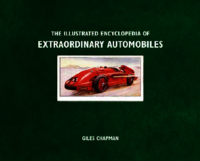
The Illustrated Encyclopedia of Extraordinary Automobiles
128 Visitas | 208 Descargas | 2014-05-08 13:25:58 | raulito
With a pop and a splutter, the concept of personal transport with its own mobile power source suddenly came to life at the end of the 19th century. German pioneers worked out ways to create “light locomotives”—a leap of imagination that mixed the mobility of the bicycle with miniature versions of the stationary engines then revolutionizing manufacturing industries.
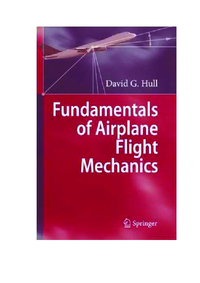
Fundamentals of Airplane Flight Mechanics
79 Visitas | 95 Descargas | 2014-05-08 16:21:40 | raulito
Flight mechanics is the application of Newton’s laws (F=ma and M=I) to the study of vehicle trajectories (performance), stability, and aerodynamic control. There are two basic problems in airplane flight mechanics: (1) given an airplane what are its performance, stability, and control characteristics? and (2) given performance, stability, and control characteristics, what is the airplane? The latter is called airplane sizing and is based on the definition of a standard mission profile. For commercial airplanes including business jets, the mission legs are take-off, climb, cruise, descent, and landing. For a military airplane additional legs are the supersonic dash, fuel for air combat, and specific excess power. This text is concerned with the first problem, but its organization is motivated by the structure of the second problem. Trajectory analysis is used to derive formulas and/or algorithms for computing the distance, time, and fuel along each mission leg. In the sizing process, all airplanes are required to be statically stable. While dynamic stability is not required in the sizing process, the linearized equations of motion are used in the design of automatic flight control systems. This text is primarily concerned with analytical solutions of airplane flight mechanics problems. Its design is based on the precepts that there is only one semester available for the teaching of airplane flight mechanics and that it is important to cover both trajectory analysis and stability and control in this course. To include the fundamentals of both topics, the text is limited mainly to flight in a vertical plane. This is not very restrictive because, with the exception of turns, the basic trajectory segments of both mission profiles and the stability calculations are in the vertical plane. At the University of Texas at Austin, this course is preceded by courses on low-speed aerodynamics and linear system theory. It is followed by a course on automatic control.
Contribuir
Usted puede contribuir con Libros UCLV, es importante para nosotros su aporte..
Contribuir